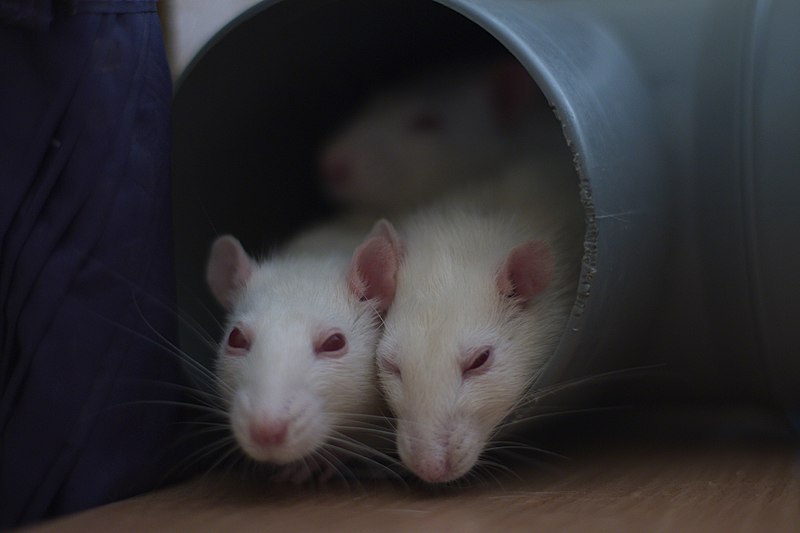A group of rats is called a mischief.
Ever wondered what you call a bunch of rats hanging out together? Well, you’re in for a treat! When it comes to collective nouns, rats have one of the most charmingly mischievous names out there. Imagine a group of these clever little critters scurrying about, plotting their next adventure. That’s right, a group of rats is called a “mischief,” and it suits them perfectly.
Let’s dive into the fascinating world of rat terminology and discover some surprising facts about these misunderstood creatures. Whether you’re an animal enthusiast, a student on a quest for fun trivia, or just someone with a curiosity for the unusual, there’s plenty to learn and love about our rodent friends. From their social behaviors to their incredible intelligence, rats are far more complex and interesting than many give them credit for. So, stick around as we explore why these tiny tricksters truly live up to their name!
Key Takeaways
- A group of rats is called a mischief.
- Rats are highly social and intelligent animals.
- Understanding rat behavior can help in their management and care.
The Mischief of Rats
So, why exactly is a group of rats called a mischief? The term “mischief” perfectly captures the essence of these lively and intelligent creatures. Rats are known for their curious and adventurous nature, often getting into all sorts of antics, especially when they’re together. Their playful and sometimes naughty behavior has earned them this fitting collective noun.
The origin of this term dates back to the Middle Ages, a time when many collective nouns for animals were coined. While the exact reason behind choosing “mischief” for rats isn’t crystal clear, it likely stems from observations of their behavior. Rats have always been seen as clever and resourceful, able to find food and shelter in the most unexpected places, often to the frustration of humans trying to keep them out. This cunning and somewhat troublesome nature led to the adoption of “mischief” to describe a group of them.
Historically, rats have been both reviled and revered. In some cultures, they’ve been seen as pests and carriers of disease, while in others, they’re symbols of luck and prosperity. This duality adds to their mysterious and mischievous reputation. For instance, in Chinese culture, the rat is the first sign of the zodiac and is associated with wealth and surplus due to their ability to find food and resources.
There are plenty of fun anecdotes and stories related to the term “mischief.” For example, it’s said that sailors used to bring cats aboard ships to keep the “mischief” of rats in check, a practice that dates back centuries. These stories highlight how deeply rats and their mischievous nature have been embedded in human history and culture. So next time you spot a group of rats, you can appreciate the cleverness and history behind calling them a mischief!

Social Behavior of Rats
Rats are incredibly social creatures, and their interactions within a mischief are a testament to their complex and fascinating behavior. These little rodents form strong social bonds and thrive in groups, relying on each other for companionship, protection, and learning.
In a mischief, rats establish a hierarchy that dictates their social structure. This hierarchy isn’t rigid but rather fluid, often changing based on the dynamics of the group. Dominant rats will take charge, but subordinates aren’t left out; they all have their roles to play. This social structure helps maintain order and reduces conflicts within the group, ensuring the mischief operates smoothly.
Communication is key in a rat’s world. Rats use a variety of methods to convey messages to one another, including vocalizations, body language, and even ultrasonic sounds that are inaudible to human ears. These communication methods help them coordinate activities like foraging for food, grooming, and nesting. Grooming, in particular, is a vital part of their social interaction. It not only helps keep them clean but also strengthens social bonds and establishes trust within the mischief.
Rats are also known for their empathy and cooperation. Studies have shown that they will go out of their way to help their fellow rats, even freeing them from traps and sharing food. This altruistic behavior is rare in the animal kingdom and highlights the depth of their social connections. It’s a clear indication that rats value their relationships and look out for one another, much like humans do.
The importance of social bonds among rats cannot be overstated. Rats that are isolated from their peers can suffer from stress and depression, showcasing their need for social interaction. This need for companionship is why rats in captivity are often kept in pairs or groups, to mimic the social environment they would naturally thrive in.
In essence, the social behavior of rats is a key factor in their survival and success as a species. Their ability to communicate, establish hierarchies, and show empathy makes them truly remarkable creatures. So, the next time you hear the term “mischief of rats,” remember it’s not just about their playful antics, but also their incredible social complexity and intelligence.
Intelligence and Problem-Solving
Rats are often underestimated when it comes to their cognitive abilities, but these tiny creatures are incredibly intelligent and resourceful. Their problem-solving skills and adaptability have made them successful survivors in a variety of environments, from urban cities to rural fields.
One of the most striking examples of rat intelligence is their ability to navigate complex mazes. In numerous scientific studies, rats have demonstrated an impressive ability to learn and remember the layout of mazes, finding the quickest routes to rewards. This ability to learn and adapt quickly is a key reason why rats have been used extensively in psychological and neurological research.
Rats also exhibit remarkable problem-solving skills. They can figure out how to access food in challenging situations, such as opening latches, manipulating levers, or even circumventing traps. Their capacity to understand and overcome obstacles showcases their mental flexibility and determination. For instance, if a rat encounters a barrier to its food, it will try different strategies until it finds a solution, demonstrating perseverance and ingenuity.
One fascinating study showed that rats can use tools to obtain food, a behavior previously thought to be exclusive to primates and certain bird species. In this study, rats were able to use sticks to push food pellets within reach, highlighting their ability to understand and use objects in their environment to solve problems. This tool use is a clear indication of their advanced cognitive processes and understanding of cause and effect.
Moreover, rats have shown an impressive ability to empathize and cooperate. Experiments have revealed that rats will work together to achieve a common goal, such as freeing a trapped companion or sharing food. This cooperative behavior indicates a high level of social intelligence and an understanding of the benefits of teamwork.
Rats’ intelligence and problem-solving abilities make them both fascinating and challenging to manage. Their cleverness allows them to adapt to new situations and environments rapidly, which is why they can thrive in places where other animals might struggle. This adaptability, combined with their social nature, makes them incredibly resilient and successful as a species.
Understanding rat intelligence not only helps in managing their populations but also offers insights into the cognitive abilities of animals in general. It reminds us that even the smallest creatures can possess remarkable intelligence and problem-solving skills, deserving of both our respect and admiration. So next time you encounter a mischief of rats, take a moment to appreciate the cleverness and ingenuity that have made them such successful survivors.
Common Misconceptions About Rats
Rats often get a bad rap, thanks to centuries of myths and misconceptions. While it’s true that they can be pests, many of the negative stereotypes about rats are simply not accurate. Let’s debunk some of the most common myths and set the record straight about these fascinating creatures.
Myth 1: Rats are Dirty and Disease-Ridden
While it’s true that rats can carry diseases, it’s important to remember that not all rats are harmful. Wild rats in urban areas may come into contact with pathogens, but domesticated rats, like those kept as pets, are generally clean and healthy. In fact, rats are meticulous groomers, spending a significant portion of their day cleaning themselves and each other. Just like cats, they have a strong instinct to stay clean, which helps keep their fur and skin in good condition.
Myth 2: Rats Are Aggressive
Rats are often portrayed as vicious and aggressive, but this is far from the truth. In reality, rats are typically shy and prefer to avoid confrontation. They may bite if they feel threatened or cornered, but they are not naturally aggressive animals. Pet rats, in particular, are known for their gentle and affectionate nature, often forming strong bonds with their human caregivers. Their social behavior is more about cooperation and companionship than aggression.
Myth 3: Rats Have No Positive Contributions
Rats have played a significant role in scientific research, contributing to numerous medical breakthroughs. Their biological similarities to humans make them valuable models for studying diseases, testing new medications, and understanding complex biological processes. Thanks to research with rats, we’ve made advancements in areas like genetics, neurology, and psychology. Additionally, rats have been used in mine detection and search-and-rescue operations due to their keen sense of smell and trainability.
Myth 4: Rats Are a Sign of Filth
While rats are often found in dirty environments, they are not inherently dirty themselves. Rats are highly adaptable and can live in a variety of conditions, which is why they are often found in human habitations where food and shelter are abundant. Their presence is more a reflection of available resources than a sign of filth. In many cases, their foraging and nesting behaviors help control other pest populations, contributing to the balance of local ecosystems.
Myth 5: All Rats Look Alike
Not all rats are the same. There are many species of rats, each with its own unique characteristics. For example, the common brown rat, or Norway rat, is different from the black rat, or roof rat, in terms of size, habitat, and behavior. Pet rats, often referred to as fancy rats, have been selectively bred for specific traits, resulting in a variety of colors, patterns, and personalities. This diversity within the rat population is a testament to their adaptability and evolutionary success.
Managing Rat Populations
While rats are fascinating creatures, managing their populations is crucial, especially in urban environments where they can become pests. Effective and humane methods of control are essential to maintain a balance between appreciating their unique qualities and ensuring they don’t pose problems for humans.
Humane and Effective Control Methods
One of the most important aspects of managing rat populations is using humane methods. Traditional methods like poisoning and trapping can be cruel and cause unnecessary suffering. Instead, consider using live traps that allow you to capture and release rats far from human habitations. Another effective method is exclusion, which involves sealing off entry points to prevent rats from entering buildings in the first place. This can include sealing cracks, installing door sweeps, and using mesh to cover vents.
Importance of Maintaining a Balance in Ecosystems
Rats play a vital role in ecosystems, and their presence is natural and beneficial in many ways. They help control insect populations, act as prey for larger animals, and contribute to the decomposition process by scavenging. Therefore, it’s crucial to manage their populations without completely eradicating them. By maintaining a balance, we can ensure that rats continue to play their ecological roles without causing problems for humans.
Preventing Rat Infestations in Homes and Businesses
Prevention is the best strategy when it comes to rat control. Here are some practical tips to keep rats at bay:
- Keep Food Secure: Store food in airtight containers and dispose of garbage regularly to reduce attractants.
- Seal Entry Points: Inspect your home or business for potential entry points and seal them. Rats can squeeze through very small gaps, so be thorough.
- Maintain Cleanliness: Keep your surroundings clean and clutter-free. Rats are attracted to piles of debris where they can find shelter and food.
- Eliminate Water Sources: Fix leaks and remove standing water. Rats need water to survive, so cutting off their supply can help deter them.
Environmental and Ethical Considerations
When managing rat populations, it’s essential to consider the environmental and ethical implications. Avoid using rodenticides that can harm other wildlife and pets. Opt for environmentally friendly solutions that target rats specifically without causing broader ecological damage. Additionally, consider the ethical treatment of rats, recognizing their intelligence and social nature. Humane treatment should be a priority, even when they need to be controlled.
By adopting humane and effective methods, we can manage rat populations responsibly, ensuring that we coexist with these intelligent creatures in a way that benefits both humans and the environment. Balancing appreciation with control is key to maintaining harmony and preventing issues related to rat infestations. So, let’s embrace a compassionate approach to managing our rodent neighbors, keeping our homes and businesses safe while respecting the important role rats play in our world.














